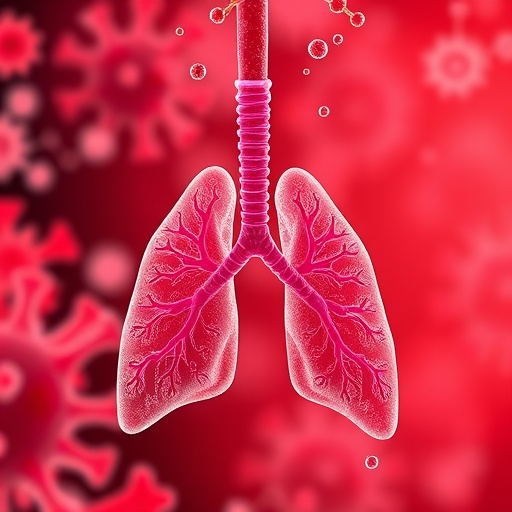India and the IHR Amendments: Strengthening Legal Preparedness for Global Health Security – Georgetown University

Report on the 2024 International Health Regulations Amendments and Implications for India’s Sustainable Development Goals
Introduction: Aligning Global Health Security with Sustainable Development
The implementation of the 2024 amendments to the International Health Regulations (IHR) on September 19 marks a significant advancement in global health governance. These reforms, shaped by the COVID-19 pandemic, create a new framework for international health security that is deeply intertwined with the 2030 Agenda for Sustainable Development. The amendments provide a critical opportunity for nations, including India, to enhance legal and institutional preparedness, thereby accelerating progress towards key Sustainable Development Goals (SDGs), particularly SDG 3 (Good Health and Well-being), SDG 10 (Reduced Inequalities), SDG 16 (Peace, Justice and Strong Institutions), and SDG 17 (Partnerships for the Goals).
The 2024 IHR Amendments: A Framework for Equity and Partnership
Core Principles and Institutional Innovations
The 2024 amendments shift the focus of the IHR from a purely technical approach to a comprehensive framework grounded in principles of equity and solidarity, reflecting the core tenets of the SDGs.
- Enhanced Alert System: The introduction of a “pandemic emergency” alert level is designed to trigger more robust international collaboration and resource mobilization, directly supporting SDG 3 (Target 3.d) by strengthening global capacity for risk reduction and management of health emergencies.
- Strengthened Governance: The establishment of the States Parties Committee for Implementation and the National IHR Authority mandates stronger national-level implementation, contributing to the development of effective and accountable institutions as outlined in SDG 16.
- Financial Solidarity: A new Coordinating Financial Mechanism aims to mobilize resources for developing countries to build core capacities. This aligns with SDG 17 by fostering global partnerships and supporting nations in achieving health security targets.
Expanded Scope for Comprehensive Health Security
The amendments broaden the scope of the IHR to address the multifaceted nature of public health threats.
- Holistic Approach: The inclusion of prevention, preparedness, and a One Health approach reinforces the interconnectedness of human, animal, and environmental health, a central theme for achieving SDG 3.
- Commitment to Equity: New obligations to facilitate equitable access to medicines, vaccines, and other health products are a direct contribution to SDG 10 (Reduced Inequalities) and SDG 3 (Target 3.8) on universal health coverage.
- Fostering Innovation: The promotion of research, development, and local production supports SDG 9 (Industry, Innovation and Infrastructure) by enhancing technological capabilities and building resilient health systems.
Analysis of India’s Legal Preparedness and SDG Alignment
Existing Legislative Deficiencies
India’s domestic legal framework presents a significant challenge to implementing the amended IHR and achieving related SDG targets. The nation’s reliance on outdated legislation, such as the Epidemic Disease Act of 1897 and the Disaster Management Act of 2005, has created critical vulnerabilities. This legal patchwork hinders the development of a coordinated and effective response mechanism, thereby impeding progress on SDG 3 (Target 3.d). The absence of a modern public health emergency law represents a gap in building the effective and accountable institutions required by SDG 16.
Strategic Recommendations for India’s IHR Implementation
To align with its new international obligations and advance its national SDG commitments, India must undertake a series of strategic actions.
- Legislative Modernization: Prioritize the enactment of a comprehensive Public Health Emergency Management Act (PHEMA). This foundational step is essential for creating the effective institutions envisioned in SDG 16 and providing a robust legal basis for protecting public health in line with SDG 3.
- Institutional Strengthening: Establish or designate a National IHR Authority at a high level of government. This will ensure the cross-sectoral coordination necessary to build institutional resilience, a key target of SDG 16.
- Enhancing Health Infrastructure: Accelerate investment in integrated digital surveillance systems, such as the Integrated Disease Surveillance Programme (IDSP) and the Integrated Health Information Platform (IHIP). This action directly supports SDG 9 by building resilient infrastructure and is critical for the early warning and risk reduction capacities required by SDG 3.
- Ensuring Equitable Access: Develop robust mechanisms for the rapid and equitable procurement, distribution, and administration of medical countermeasures. This is a direct measure to achieve the goals of SDG 10 and SDG 3 by ensuring health equity during emergencies.
- Strategic Financial Commitment: Leverage the IHR’s Coordinating Financial Mechanism while simultaneously increasing domestic funding for health security. This dual approach demonstrates a commitment to the global partnerships of SDG 17 and national ownership of health outcomes.
- Adopting Performance Frameworks: Utilize WHO guidance, including the 7-1-7 framework, to integrate performance evaluation into emergency response. This will improve effectiveness and accountability, contributing to the overall objective of SDG 3.
Conclusion: Leadership in a New Era of Global Health
The amended IHR embodies a new vision for global health security founded on the principles of equity, solidarity, and partnership, which are central to the 2030 Agenda for Sustainable Development. By modernizing its laws, strengthening its institutions, and embedding equity into its health security framework, India has the opportunity to protect its population and demonstrate global leadership. Such actions will advance a more resilient global health order and significantly contribute to the achievement of SDG 3, SDG 10, SDG 16, and SDG 17.
Analysis of Sustainable Development Goals in the Article
-
Which SDGs are addressed or connected to the issues highlighted in the article?
The article on the International Health Regulations (IHR) amendments and India’s legal preparedness connects to several Sustainable Development Goals (SDGs), primarily focusing on health, institutions, and global partnerships.
- SDG 3: Good Health and Well-being: This is the most central SDG. The entire article revolves around strengthening global health security, preventing and responding to pandemics, ensuring equitable access to medicines and vaccines, and building resilient health systems. The discussion on the “pandemic emergency” alert, surveillance systems, and core capacities for prevention and response directly addresses the goal of ensuring healthy lives.
- SDG 16: Peace, Justice and Strong Institutions: The article extensively discusses the need for legal and institutional reform in India. It highlights the inadequacy of existing laws like the Epidemic Disease Act of 1897 and calls for a new “Public Health Emergency Management Act (PHEMA).” The establishment of a “National IHR Authority” and the “States Parties Committee for Implementation” are examples of building effective, accountable, and transparent institutions at national and international levels to manage global health crises.
- SDG 17: Partnerships for the Goals: The article underscores the importance of international cooperation. The IHR amendments themselves are a product of global partnership and negotiation. The creation of a “Coordinating Financial Mechanism” to mobilize resources for developing countries, the emphasis on international collaboration during a “pandemic emergency,” and the call for scientific exchange are all directly related to strengthening the global partnership for sustainable development.
-
What specific targets under those SDGs can be identified based on the article’s content?
Based on the article’s discussion, several specific SDG targets can be identified:
- Target 3.d: “Strengthen the capacity of all countries, in particular developing countries, for early warning, risk reduction and management of national and global health risks.” The article directly addresses this by discussing the IHR amendments’ focus on enhancing core capacities from “surveillance and response to include prevention and preparedness.” India’s need to upgrade its “Integrated Disease Surveillance Programme (IDSP)” and implement robust, real-time disease surveillance systems is a clear link to this target.
- Target 3.b: “Support the research and development of vaccines and medicines… provide access to affordable essential medicines and vaccines…” The amendments introduce “obligations to facilitate equitable access to medicines and vaccines, promote research and development, and support local production.” This reflects India’s advocacy for equity and directly aligns with this target.
- Target 16.6: “Develop effective, accountable and transparent institutions at all levels.” The article’s critique of India’s “outdated laws and fragmented governance” and its call for a comprehensive “Public Health Emergency Management Act (PHEMA)” and a “national IHR authority” to coordinate implementation are direct efforts to build more effective and accountable institutions for public health emergencies.
- Target 17.9: “Enhance international support for implementing effective and targeted capacity-building in developing countries to support national plans to implement all the Sustainable Development Goals…” The establishment of the “Coordinating Financial Mechanism to identify funding gaps and mobilize resources to support developing countries in building and maintaining core capacities” is a perfect example of this target in action.
-
Are there any indicators mentioned or implied in the article that can be used to measure progress towards the identified targets?
Yes, the article mentions and implies several indicators that can be used to measure progress:
- Indicator for Target 3.d: The article explicitly mentions the “7-1-7 evaluation framework.” This framework provides clear, measurable performance targets for health emergency response: “seven days to detect an outbreak, one day to notify public health authorities, and seven days to complete early response actions.” This serves as a direct indicator of a country’s capacity for early warning and response. The overall implementation and compliance with IHR core capacities is the official indicator (3.d.1), and the 7-1-7 framework is a tool to measure it.
- Indicator for Target 16.6: An implied indicator is the enactment of comprehensive public health emergency legislation (PHEMA) and the formal establishment of a National IHR Authority. The article frames these as critical steps for India. The existence and operational status of this legal framework and coordinating body would be a clear measure of progress in developing effective institutions.
- Indicator for Target 17.9: The article points to financial indicators. Progress can be measured by the amount of international funding accessed through the Coordinating Financial Mechanism and the level of a country’s own financial commitment, as the IHR requires countries to “maintain or increase their domestic funding” for implementation. Tracking these financial flows would serve as an indicator of both international support and national commitment.
-
SDGs, Targets, and Indicators Summary
SDGs Targets Indicators SDG 3: Good Health and Well-being Target 3.d: Strengthen capacity for early warning, risk reduction, and management of global health risks. Target 3.b: Support R&D and provide access to affordable essential medicines and vaccines.
Performance measured by the “7-1-7 evaluation framework” (detect in 7 days, notify in 1, respond in 7). Mechanisms for equitable procurement and distribution of medical countermeasures.
SDG 16: Peace, Justice and Strong Institutions Target 16.6: Develop effective, accountable and transparent institutions at all levels. The passage of a Public Health Emergency Management Act (PHEMA). The establishment and operationalization of a National IHR Authority.
SDG 17: Partnerships for the Goals Target 17.9: Enhance international support for effective and targeted capacity-building in developing countries. Amount of international funding accessed via the Coordinating Financial Mechanism. Level of domestic funding allocated for IHR implementation.
Source: oneill.law.georgetown.edu
What is Your Reaction?
 Like
0
Like
0
 Dislike
0
Dislike
0
 Love
0
Love
0
 Funny
0
Funny
0
 Angry
0
Angry
0
 Sad
0
Sad
0
 Wow
0
Wow
0




















































.jpg.webp?itok=0ZsAnae9#)



























